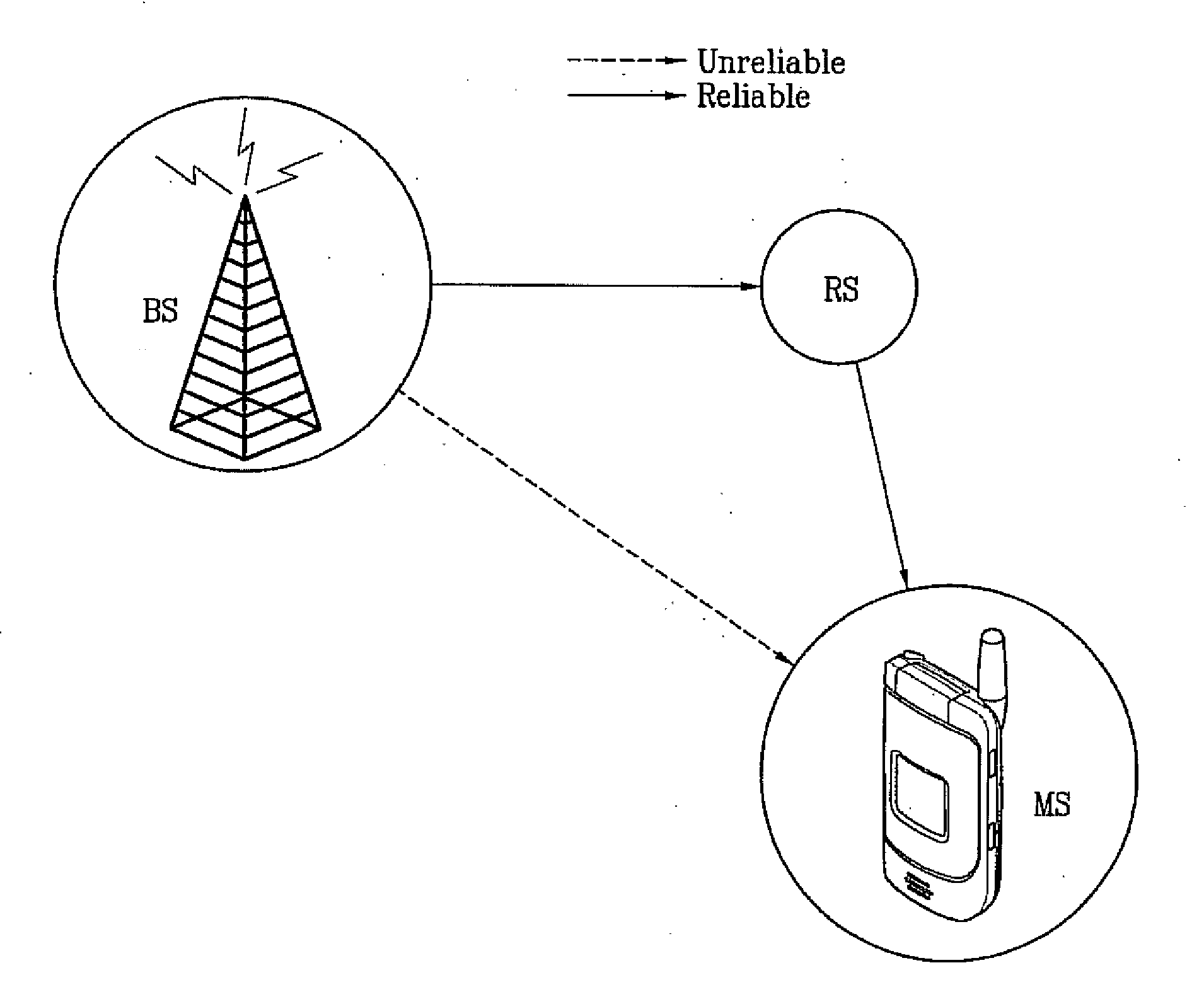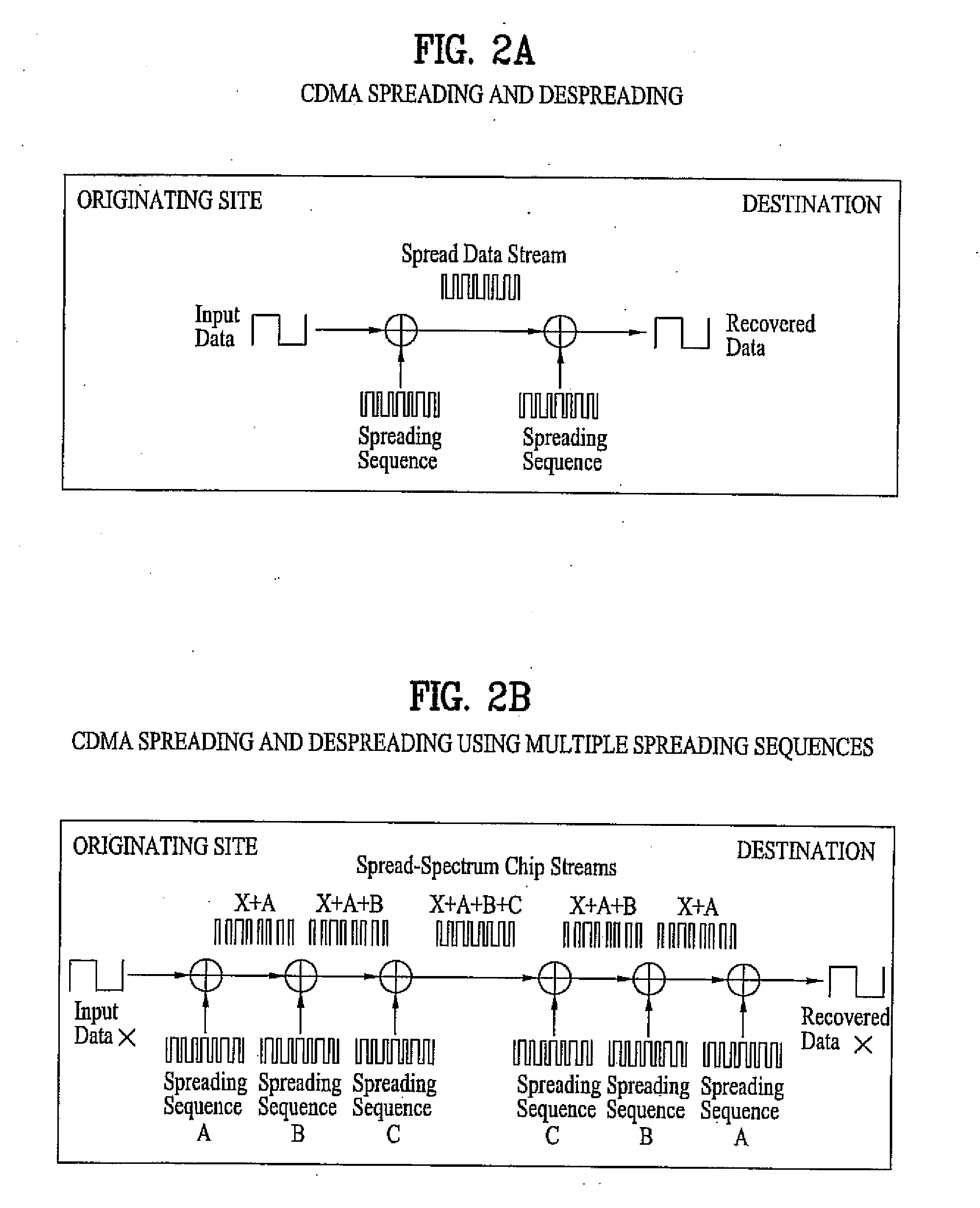Method of transmitting data in cellular networks using cooperative relaying
- Summary
- Abstract
- Description
- Claims
- Application Information
AI Technical Summary
Benefits of technology
Problems solved by technology
Method used
Image
Examples
Embodiment Construction
[0044] Reference will now be made in detail to the preferred embodiments of the present invention, examples of which are illustrated in the accompanying drawings. Wherever possible, the same reference numbers will be used throughout the drawings to refer to the same or like parts.
[0045] Referring to FIG. 1, a wireless communication network architecturel is illustrated. A subscriber uses a mobile station (MS) 2 to access network services. The MS 2 may be a portable communications unit, such as a hand-held cellular phone, a communication unit installed in a vehicle, or a fixed-location communications unit.
[0046] The electromagnetic waves for the MS 2 are transmitted by the Base Transceiver System (BTS) 3 also known as node B. The BTS 3 consists of radio devices such as antennas and equipment for transmitting and receiving radio waves. The BS 6 Controller (BSC) 4 receives the transmissions from one or more BTS's. The BSC 4 provides control and management of the radio transmissions fr...
PUM
 Login to View More
Login to View More Abstract
Description
Claims
Application Information
 Login to View More
Login to View More - R&D
- Intellectual Property
- Life Sciences
- Materials
- Tech Scout
- Unparalleled Data Quality
- Higher Quality Content
- 60% Fewer Hallucinations
Browse by: Latest US Patents, China's latest patents, Technical Efficacy Thesaurus, Application Domain, Technology Topic, Popular Technical Reports.
© 2025 PatSnap. All rights reserved.Legal|Privacy policy|Modern Slavery Act Transparency Statement|Sitemap|About US| Contact US: help@patsnap.com



